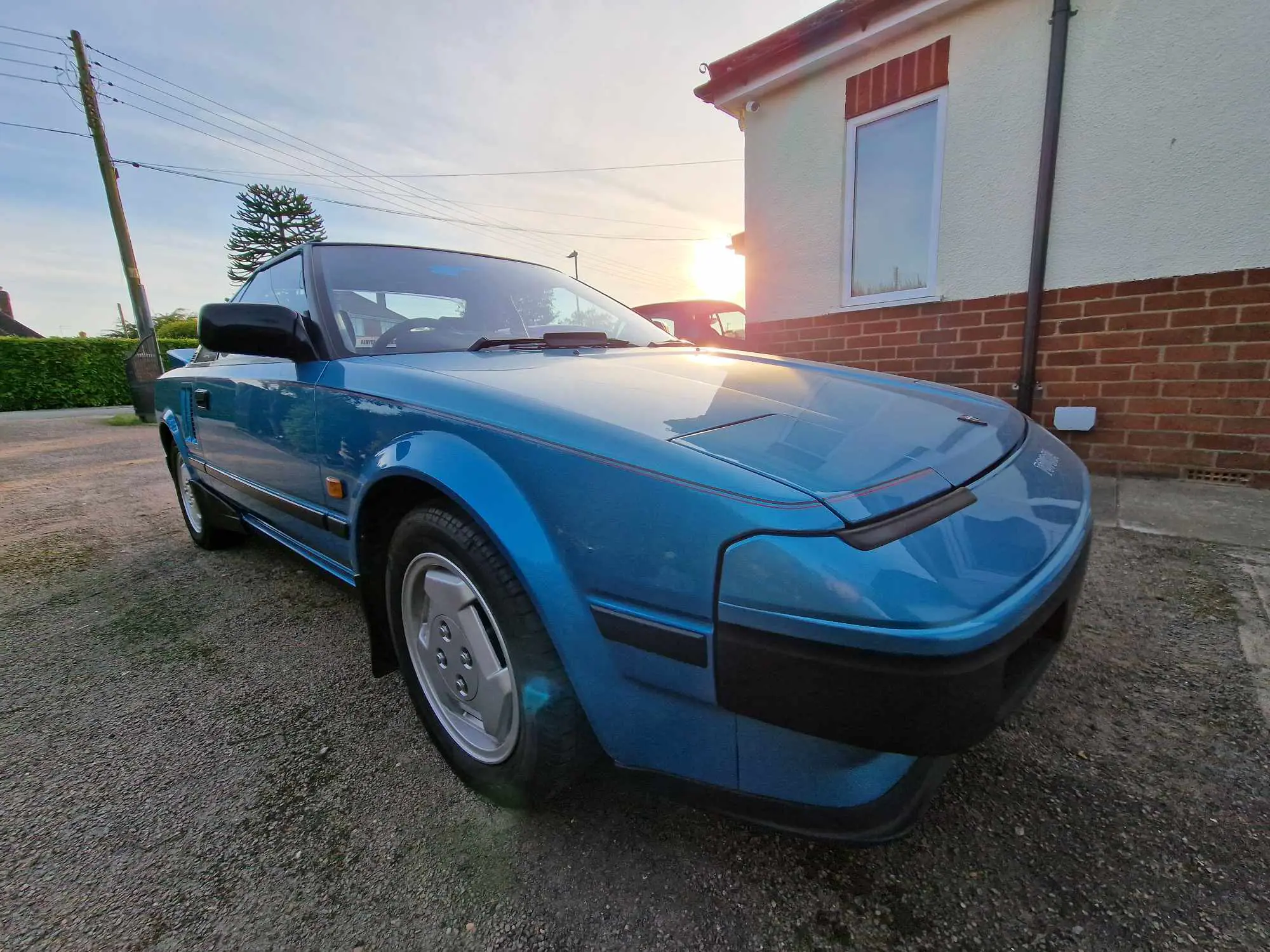MEET THE OWNER – JON COUPLAND AND HIS TOYOTA MR2 MK.1A
24 May 2024
“It is exceptionally rare, being one of the earliest in the UK. It is a Mk.1a, which they only produced for a year (the same as the colour). I know of maybe only four in the UK in that shade”.

Jon’s MR2 is a significant car for several reasons, some relating to its manufacturer and others even more important. Toyota unveiled the SV-3 prototype at the 1983 Tokyo Motor Show, and it made its European debut at the NEC in the autumn of 1984. MR2 stood for “Midship Runabout 2-Seater”. This writer vividly recalls how visitors to the International Motor Show flocked to the Toyota stand to catch a glimpse of Japan’s first rear mid-engine production car. In addition, some observers muttered that the MR2 was the car Triumph should have built, had the fates been kinder, and MG should have been making.
UK sales began in March 1985, with Toyota GB deciding to import only the 1.6- litre 16-valve version. The DHOC fuel-injected engine, mounted transversely behind the cabin, was from the Corolla GT Coupe, and a ‘joystick’ operated the five-speed transmission. Toyota claimed the top speed was 124 mph, and it could go from 0-60 in 8.2 seconds. They also boasted: “Other sports cars promise - the MR2 delivers”.
The initial price was £9,295, which included luxuries beyond the dreams of most ‘traditional British sports car’ owners. Not only did the MR2 offer electric windows, central locking, and a radio/cassette player, but there was also the detachable ‘moon roof’, tinted glass and electrically adjusted door mirrors. The cabin also featured seats with pressure controls for lumbar support and a leather- trimmed adjustable steering wheel. Metallic paint was the sole extra at £42.36.
The USA was another vital export market for the MR2, and Car and Driver concluded a 12-month running report with “The MR2 gave us a year of pure driving enjoyment”. Across the Atlantic, Autocar thought it “set new standards in a number of areas and is great fun to drive”. Meanwhile, Motor Sport regarded the MR2 engine as: “A great design, and the word ‘great’ is not used lightly. In my view it is one of the truly great mass-produced motors in the history of the motor car. It’s so willing and responsive that it seems to have the edge on engines which, on paper, are more powerful or more muscular.”
Toyota replaced the Mk. 1A with the facelifted Mk.1b in 1986. The MR2 ran for three generations until 2007, and it is impossible to overestimate the impact of those first models nearly four decades ago. As Motor put it in 1985, “Here, at last, is the mini-exoticar enthusiasts have been waiting for”. But Jon’s MR2 is essential for another reason, and he explains: “I was going through a really tough time in life with my mental health, and it saved me. I found the MK2 in Peterborough around 2013 - it was on the driveway under a tarpaulin, and I thought that judging by the shape, it was a TR7. At that time, I only owned one car: my Nissan Micra. I had wanted a ‘classic car’ for a long time and one morning as I was leaving for work, I accosted the owner and asked if I could see the ‘TR7’. He told me it was a Toyota MR2 and showed me. It has been his daily driver up until he laid it up.”
This was Jon’s first encounter with an MR2, and: “I fell in love with it and asked the owner if the Toyota was for sale. He said yes, and £500 later, it was mine. I picked it up that night and brought it back to Boston. Dad and I spent six months getting it back on the road and back to its former glory. That car got me through a big black hole I was in and literally saved my life. I think. It is so special to me. I would sell everything I owned before giving it up.”
There are countless reasons to buy a classic car, and many other enthusiasts echo Jon’s experiences. A vehicle is always more than merely the result of an industrial process - what it represents is infinitely more important.
With thanks to: Jon Coupland
